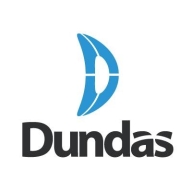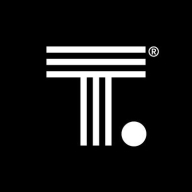


Find out what your peers are saying about Salesforce, Apache, Splunk and others in Data Visualization.
The documentation for Splunk Enterprise Security is outstanding. It is well-organized and easy to access.
We couldn't calculate what would have been the cost if they had actually gotten compromised; however, they were in the process, so every investment was returned immediately.
On average, my SecOps team takes probably at least a quarter of the time, if not more, to remediate security incidents with Splunk Enterprise Security compared to our previous solution.
Using ThoughtSpot has resulted in significant time savings and improved business sales by allowing us to identify sellers and buyers across regions, facilitating targeted marketing.
Based on our implementation in one project, we are trying to raise more funding to expand its use.
ThoughtSpot saves a significant amount of time compared to other tools and is very user-friendly.
We have paid for Splunk support, and we’re not on the free tier hoping for assistance; we are a significant customer and invest a lot in this service.
I have had nothing but good experiences with Splunk support, receiving timely and helpful replies.
We've had great customer success managers who have helped us navigate scaling from 600 gigs to 30 terabytes.
I stopped opening tickets due to insufficient and untimely responses.
ThoughtSpot provides a dedicated customer success person and the ability to submit tickets online, with a response time of no more than a day.
The knowledge base for ThoughtSpot is less robust compared to others.
We currently rely on disaster recovery and backup recovery, which takes time to recover, during which you're basically blind, so I'm pushing my leadership team to switch over to a clustering environment for constant availability.
They struggle a bit with pure virtual environments, but in terms of how much they can handle, it is pretty good.
It is easy to scale.
Tableau, Power BI, or Looker have separate tools for preparation, customization, and storytelling.
The platform does not have technical problems with scaling data or connections.
As our data has grown, I have validated huge datasets and complex models without significant issues.
They test it very thoroughly before release, and our customers have Splunk running for months without issues.
Splunk has been very reliable and very consistent.
It provides a stable environment but needs to integrate with ITSM platforms to achieve better visibility.
I use it primarily for large datasets, and it performs faster than regular data visualization tools such as Power BI, which has limits on dataset size.
The upgrades are smooth with no downtime, which is super important.
The responsiveness of accessing live data is exceptional and faster than most other BI tools.
Improving the infrastructure behind Splunk Enterprise Security is vital—enhanced cores, CPUs, and memory should be prioritized to support better processing power.
Splunk Enterprise Security is not something that automatically picks things; you have to set up use cases, update data models, and link the right use cases to the right data models for those detections to happen.
For any future enhancements or features, such as MLTK and SOAR platform integration, we need more visibility, training, and certification for the skilled professionals who are working.
Currently, it is not as customizable as the options available on Power BI or Tableau.
Handling governance when there are many models and dashboards is complex.
Enhancing integration capabilities with other tools like DBT would also be beneficial as it would make our lives easier.
I saw clients spend two million dollars a year just feeding data into the Splunk solution.
The platform requires significant financial investment and resources, making it expensive despite its comprehensive features.
I find it to be affordable, which is why every industry uses it.
HubSpot is expensive.
ThoughtSpot's pricing is reasonable and in line with other BI tools.
This capability is useful for performance monitoring and issue identification.
I assess Splunk Enterprise Security's insider threat detection capabilities for helping to find unknown threats and anomalous user behavior as great.
Splunk Enterprise Security provides the foundation for unified threat detection, investigation, and response, enabling fast identification of critical issues.
Its compatibility with most databases, including the latest from FlexMovely and Redshift, allows users to create joins and worksheets easily.
This alerting feature is very beneficial for our company at the moment, and we use it extensively.
When I upload a data dump, AI analytics suggest possible data visualizations and insights, which I can pin to dashboards or live boards for modification.
| Product | Market Share (%) |
|---|---|
| Dundas Dashboard | 0.5% |
| Tableau Enterprise | 20.6% |
| Apache Superset | 9.3% |
| Other | 69.6% |
| Product | Market Share (%) |
|---|---|
| Splunk Enterprise Security | 9.3% |
| Wazuh | 10.9% |
| IBM Security QRadar | 7.2% |
| Other | 72.6% |
| Product | Market Share (%) |
|---|---|
| ThoughtSpot | 1.5% |
| Microsoft Power BI | 14.5% |
| Tableau Enterprise | 11.0% |
| Other | 73.0% |


| Company Size | Count |
|---|---|
| Small Business | 2 |
| Midsize Enterprise | 2 |
| Large Enterprise | 5 |
| Company Size | Count |
|---|---|
| Small Business | 110 |
| Midsize Enterprise | 48 |
| Large Enterprise | 255 |
| Company Size | Count |
|---|---|
| Small Business | 3 |
| Large Enterprise | 12 |
Dashboards provide a central location for users to access, interact and analyze up-to-date information so they can make smarter, data-driven decisions. Good dashboard software enables you to monitor and measure performance and metrics in real-time and on the go. You can visualize and analyze data and focus on Key Performance Indicators (KPIs) from across the organization on a dashboard, helping you gain valuable insight and drive quick and accurate decision making.
Splunk Enterprise Security delivers powerful log management, rapid searches, and intuitive dashboards, enhancing real-time analytics and security measures. Its advanced machine learning and wide system compatibility streamline threat detection and incident response across diverse IT environments.
Splunk Enterprise Security stands out in security operations with robust features like comprehensive threat intelligence and seamless data integration. Its real-time analytics and customizable queries enable proactive threat analysis and efficient incident response. Integration with multiple third-party feeds allows detailed threat correlation and streamlined data visualization. Users find the intuitive UI and broad compatibility support efficient threat detection while reducing false positives. Despite its strengths, areas such as visualization capabilities and integration processes with cloud environments need enhancement. Users face a high learning curve, and improvements in automation, AI, documentation, and training are desired to maximize its potential.
What Are the Key Features of Splunk Enterprise Security?In specific industries like finance and healthcare, Splunk Enterprise Security is instrumental for log aggregation, SIEM functionalities, and compliance monitoring. Companies leverage its capabilities for proactive threat analysis and response, ensuring comprehensive security monitoring and integration with various tools for heightened operational intelligence.
ThoughtSpot is a powerful business intelligence tool that allows easy searching and drilling into data. Its ad hoc exploration and query-based search features are highly valued, and it is easy to set up, stable, and scalable.
The solution is used for reporting purposes, self-service BI, and embedding into other applications for customers to do self-service analytics. It helps businesses with metrics, KPIs, and important insights by sourcing data from various sources into one golden source and visualizing it in an easy way for the business to consume. The pricing model is ideal, charging for data rather than the number of users.